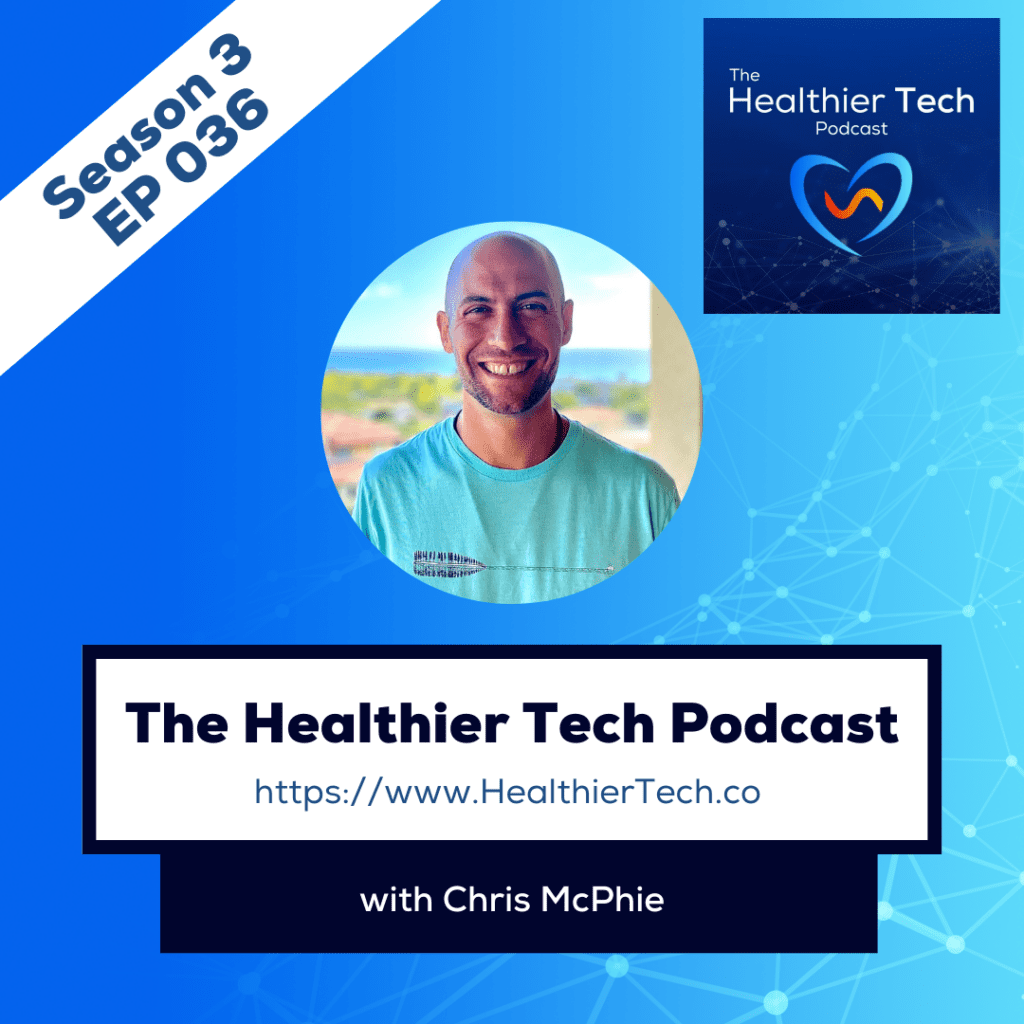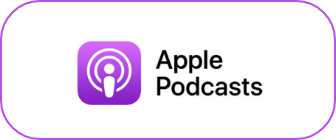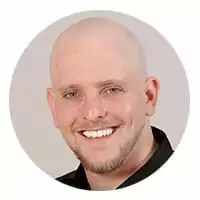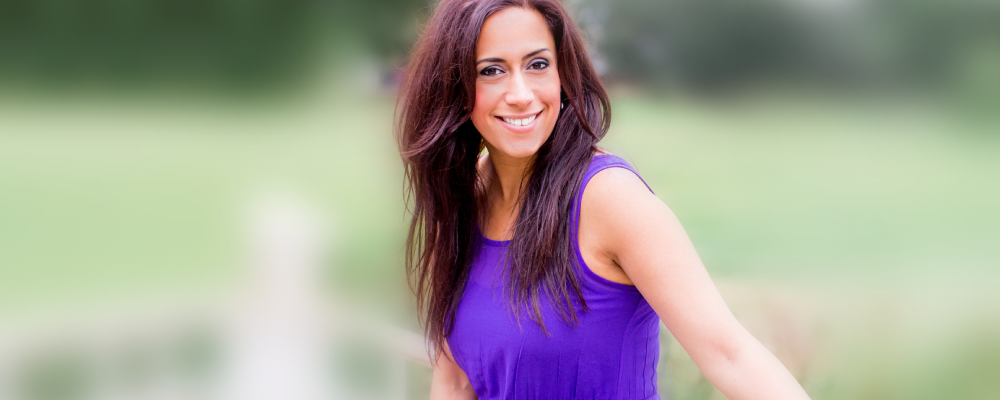Listen
Show Notes
On today’s episode, Chris joins us to talk about indoor environments and EMF exposure. We take a look at building biology, what it is, how it works, and Chris’ own experience as he came into the field. Chris tells us about a new project that he and another Building Biologist have launched called The Wishing Tree, a children’s book designed to introduce the concepts covered by Building Biology in a simple, understandable way. Through the story in the book, children and parents alike can learn about the things in their homes that can affect them and how they can improve their environment.

In this episode, you will hear:
- Behavioral effects of EMF exposure on children
- What is Building Biology?
- Different ways that your environment can impact your overall health and wellness
- The Wishing Tree: A Building Biology-Inspired Fairy Tale
- Introducing children and parents to the concepts behind Building Biology
Chris McPhie is a certified Building Biologist, Electromagnetic Radiation Specialist, and previous elementary school teacher of 10 years. He is on a mission to empower others and show them how to create the healthiest spaces possible. He takes a holistic view towards helping others clean up their indoor environments and focuses heavily on EMF education as a whole.
Connect with Chris:
Website: www.thehealthierhome.ca
Email: [email protected]
LinkedIn: linkedin.com/in/chris-mcphie-b-ed-bbec-emrs-4a71a91b9
YouTube: youtube.com/channel/UCkwUQsf44q4EGpBIDITwOUQ
Facebook: facebook.com/chris.mcphie.925
Instagram: instagram.com/thehealthierhome
Connect with R Blank and Stephanie Warner:
For more Healthier Tech Podcast episodes and to download our Healthier Tech Quick Start Guide, visit https://www.healthiertech.co and follow https://instagram.com/healthiertech
Additional Links:
- Shield Your Body website: https://ShieldYourBody.com
- Shield Your Body Youtube Channel: https://youtube.com/shieldyourbody
- Host R Blank on LinkedIn: https://www.linkedin.com/in/rblank9/
- Shield Your Body on Instagram:https://instagram.com/shieldyourbody
Transcript
Chris McPhie 0:00
And I was teaching elementary school at the time. And I was seeing a lot of issues in children, which was concerning. And so I really felt called to try and help out in a sort of broader scope as to what might be going on health wise here. And yeah, the rest is sort of, I went down and started to become more familiar with building biology and feel called towards that path. And that’s sort of where it all started. So it was it was a concern with my daughter that started off and then the research that really sort of gave it a backing that made me think, oh, wow, there’s there’s something here that really needs a little bit more awareness.
Announcer 0:36
Welcome to the healthier tech podcast, the show about building a healthier relationship with modern technology. Now, here are your hosts, R blank and Stephanie Warner.
R Blank 0:49
So today, this interview with Chris, we’re talking about a project, it’s got to be one of the most unique and heartfelt things that we’ve ever covered. The podcast, I’m really looking forward for the listeners to get back to learn about the Wishing Tree.
Stephanie Warner 1:03
Yeah, me too. I am just kind of blown away by this concept and this project in just to give a quick, just a quick little blurb about it. This is going this is a book that’s being put that’s been written for children to help them understand some some key concepts about healthier living, and it’s done in such a creative and unique way. I’m really excited to read it and for us to share this with our community. So please do be sure to check out the Kickstarter project. We have the link in the show notes.
R Blank 1:36
Let’s get into it.
Stephanie Warner 1:37
All right, let’s do it.
R Blank 1:42
Chris McPhee is a certified building biologist, environmental consultant, and electromagnetic radiation specialist whose passion is to empower others to create the healthiest living spaces possible. He takes a holistic view of helping others clean up their indoor environments, and focuses heavily on EMF education as a whole. Chris believes it is within everyone’s power to create a healthier and more health promoting space. And he is here to help us along that journey. Let’s welcome Chris to the healthier tech podcast, as he shares his knowledge with us today. Hey, Chris, how’s it gone?
Chris McPhie 2:14
It’s going Wonderful. Thank you so much for having me on. I’m very excited to speak to you all today.
R Blank 2:19
Oh, no, it’s great having you. So let’s just dive right in what what first made you aware of EMF as an issue? Has it been something you’ve been doing, like your whole life? Or was there like a moment? Yeah, there
Chris McPhie 2:30
was a moment actually, it was with my. So I’ve got two two children five and eight. Currently, when my eldest was to sort of six years ago, now, we were at our doctor’s office, and she was doing some testing to just to see just some general testing to see where there might be some imbalances or just areas of focus and EMF exposure came up. And it was something that was I had vaguely heard about before. But the comment that really sort of struck me as as Oh, this might be something important. She says, Yeah, but this comes up for everyone. And I was like, well, that doesn’t seem good. Like, everyone has this problem. Like, maybe there’s something more here. So that really just sort of was a seed that was planted. And I quickly just just started doing some researching. And it was over the next, you know, one or two years that I became very much engrossed in the whole material, I was fascinated, I was blown away that there was so much material out there, that and on the same token that I had scarcely ever heard of it, I didn’t really know what these letters stood for. And it was really eye opening for me. And so that really began my journey. And I was teaching elementary school at the time, and I was seeing a lot of issues in children, which was concerning. And so I really felt called to try and help out in a sort of broader scope as to what might be going on health wise here. And yeah, the rest is sort of went down and started to become more familiar with building biology and feel called towards that path. And that’s sort of where it all started. So it was it was a concern with my daughter that started off and then the research that really sort of gave it a backing that made me think, oh, wow, there’s there’s something here that really needs a little bit more awareness. So
R Blank 4:15
just to hear what kind of doctor was that? Doctors wouldn’t?
Stephanie Warner 4:20
That was shocking to me that actually said, this is something that comes up for everyone. I’d love to hear more about that.
Chris McPhie 4:26
Yeah, so she is a naturopathic doctor. Okay, someone who’s generally a little bit more open to these sort of ideas, perhaps. And so she was doing some auricular testing, which is a testing methodology that she learned in Germany a few decades back, and that that was the testing that she was doing for for our daughter. Yeah, so I know, otherwise, I’m not sure you might not be as accustomed getting that from an allopathic doctor.
R Blank 4:53
So, you have this moment and you started on this journey. And I want to get to that journey, but I’m just wondering like Were there things you started doing right away with your kid?
Chris McPhie 5:03
Yes, absolutely. So I, I tend to sort of jump into things very quickly and become slightly obsessed with my wife would say. And so, yeah, I was I was very quick. And I, I tend to change very quickly. It’s no problem for me. And I sometimes aren’t as appreciative of the fact that I have an entire family that also has to change with me. So there was I tried to get us to wired right away, I tried to really start to, I guess not no, sorry, let me step back, I didn’t go to wired right away, it was, it was probably over six months that we started to explore some options. So we began with just realising that distance is a big issue with EMF, so starting to increase our distance with where our Wi Fi router was where our cell phones are kept pretty simple things like that, that we began with. And then it’s slowly progressed and slowly progressed, I know a big one that was tricky for a lot of people and for my wife in particular was the baby monitor. So we had a two year old at the time, and, and then another year later, we had our son, so we had two little ones around, and it was, you know, they were only about our house wasn’t that big, you know, they weren’t that far away. But I’m so accustomed to, you know, needing this video camera on your child the whole night. So that was a big a challenge for for us to sort of, I should say for you more for my wife to sort of get used to, and but it was an education that sort of needed to happen, which on a micro cosmic scale was really good learning for me in how to try and communicate these ideas to others and to, I guess, not expect that someone might be in the same frame of mind as me that just wants to jump in and totally change their whole life around right away. It’s the process, I guess, for people. So that was good learning that came in our situation?
R Blank 6:59
And did you start to notice improvements in your health or your family’s health or if
Chris McPhie 7:07
it was, now, we never had anything that was terribly symptomatic. So when these EMF sort of issues were coming up in this testing, it was, it was nothing that we could, at least on, initially, sort of pinpoint, oh, this sickness has gone away, or something like that. It wasn’t as drastic as that. But what we did notice was when it came back on, and there was more, you know, it’s sometimes hard to put your finger on, but there was just seem to be some more behavioural issues with our kids. And they’re great. But you know, there was, it seemed the patience wasn’t there, or there was just some small things that were coming up that we started to sort of make note on. Or when we go and visit the grandparents at a house where it’s more typical, where they’ve got Wi Fi and devices all over the place. And they’re all of this, we noticed some differences. And to this day, now, it’s pretty clear when we’re in a house that has everything kicking off the way that most houses normally do. And then we come back to our place, which is significantly different environment. Yeah, we noticed a big change. And mostly what we noticed is behaviour.
R Blank 8:15
There does Yeah. So yeah, so So you mentioned building biology. And for those listeners who don’t know, we’ve covered building biology, actually, in depth we’ve talked about in a few episodes, but in depth in Episode Six with Steven Collette. So I’d encourage the listeners who want to learn a lot more about it to go check out Episode Six. But Chris, in brief, in very brief terms, what is building biology? And how did you you know, what was it in your research following this doctor’s appointment that led you to want to focus in it?
Chris McPhie 8:48
That’s a good question. So building biology is essentially how I like to describe it is the science of how buildings or structures are impacting the health of the people inside them. And so we are building biology really takes a big sort of holistic view on the different factors that might be impacting the health of those inside the structures. So everything from air quality and water issues and building materials. And I mean, this is all encompassed. And a big thing that they have, that I didn’t see too many other places was they have an entire sort of pillar of focus on the electromagnetic environment of the structure. So and this encompasses more than one type of EMF, all new stuff to me that I was terribly interested in and really loved. And they did a great job of, of training us to not only assess the building, but then offer lots of sort of usable strategies that we can teach people and offer to others and how to clean up their environment. And it’s, it’s really, it’s really the only place that I saw where it was taking a lot of different health factors, including electromagnetics and Putting them all together in a really nice, usable sort of way of figuring out if something might be unhealthy for someone or not. So,
Stephanie Warner 10:09
yeah. So I’m kind of fascinated you were an elementary school teacher for 10 years. How did you go from being a teacher into building biology? Like, what did that journey look like for you?
Chris McPhie 10:24
Yeah, it was, it was a journey that came out of a bit of necessity, I was feeling very cold towards this new endeavour. And at the same time, I think the universe just sort of was also giving me a push out of my job, that sort of situation happened, where I was not happy there. And then really feeling called here. And it was just really clear for me that I needed to make a change. And I needed to kind of devote all my time into that at the moment. Now, that’s not the easiest thing when you’ve got a young family and you’ve got a good steady paycheck. And that’s, you know, that was, there were some challenges along the way. There were, we were just trying to figure out, okay, it’s clear, Chris, yes, you’ve got to do this. And my wife was very supportive. She’s amazing. And she was, it continues to be very supportive. But we, you know, we had some things to figure out along the way, just in how to logistically make it work for us. And, yeah, which I mean, I guess it’s just life in general. I mean, we’re still figuring it out, as Is everyone all the time. So, but it was, it wasn’t, it wasn’t, you know, super, like, sweet. I’m just going to switch my job here to jump into building biology. Yeah, it was a challenge. If there was some overlap time when I was studying both and then time doing some odd jobs here and there. And you know, you do what you got to do. But yeah, it’s I wouldn’t, I wouldn’t change anything I’ve been, I’ve been very happy and very impressed with the Institute and the training they’ve given us in the support. And just, it’s like a family. I mean, everyone’s just the best there. So it’s been Yeah,
R Blank 11:53
we yeah, we know and work with a lot of BVIs. And it’s every it’s it is a really great community. And so. So this journey that you are on has led you to a project, which is why we wanted to talk to you today. And so it’s called the Wishing Tree. So to kick this off, what what is the Wishing Tree and what made you want to take on this project.
Chris McPhie 12:21
So thank you. This is a really exciting project that we’ve just launched. And I say we there’s another phyllo building biologist by the name of Scott Ricker friend and colleague that I met during our training down in New Mexico, back in March of 2020, just before things went crazy. And before, and so we met down there in, in New Mexico and just kind of hit it off and chatting. And it was it was great. And it wasn’t till a few, about two months after that, when we were doing our first online seminar with the building Biology Institute, I was this was finishing up some of my training that Scott threw out the idea to me, Hey, how about writing a children’s book, and it was really kind of out of the blue, he knew that I was a teacher at the time. He himself has five kids. And, you know, there was this sort of common theme that we were both interested in sort of helping our children essentially. And with my background, Scott just offered it to me as a potential working sort of partnership. And we just started throwing some ideas back and forth for how we might be able to communicate some of these concepts to a young audience, being the sort of four to 10 age range audience, which is what we market it for him, which we’ve sort of designed this book to try and gently introduce some of these healthy living principles that building biology sort of focuses on, and how can we introduce these in a really gentle, really fun and exciting way for kids and families. So that that’s what we’ve attempted to do. And I’m, I’m quite happy with how it’s all turned out.
R Blank 13:58
So yeah, so and I think maybe you just answered this, but is the book for? Like, is it for children? Or is it for parents of children? Is it for the family to experience together? Like how do you envision how do you envision the book being used?
Chris McPhie 14:15
I envision and more is the last thing and more as a family to use together. It’s from our testing, it’s been really well received by children and families. It’s very actionable in that you could just take it as a beautiful magical adventure story and read it and maybe there’s some things that are going to stick in there. But there’s a lot more to it that you can take out there’s there’s some clear messages that are communicated. As far as healthy living techniques that you can do. We focus on three main sort of areas of focus and we how we do it is through this Magical Quest that our two main characters go on to try and heal their sick mum. And as they’re going through this quest, and As they get transported after touching the Wishing Tree and making a wish for their mom to be healed, they get transported into a magical world, which is kind of them shrunk down in the forest itself. And as they are going through certain challenges to reach this gnome wizard at the end, it’s through these challenges that they help some other forest friends. And it’s through those challenges that actually learn what they need to know to help their mum back at their own house.
R Blank 15:28
As you’re talking about this, I’m envisioning the Wishing Tree as being like the tentpole of a building biology cinematic universe, you know, I love it. So yeah, like, cuz, I mean, I, I’ve read some building biology materials. I’m not anything close to an expert. But I know that cuz, I mean, there is a lot. So like, what are some? I mean, you talked about some of how you approach it, but what are like, what are the aspects of building biology that you really try to get across to children? Right, because you can’t you can’t give them like a BBC education.
Chris McPhie 16:04
That’s right. Yeah. As you said, there’s a lot to the science as a whole. And you know, you can really geek out on it and get real into the weeds. And it’s great. But yeah, how do we boil that down for kids and families in a very just simple way. So we decided to focus on three challenges, one, that that that has its learning in air quality. So how we can improve the air quality in our homes, the other one focuses on natural cleaning products. And they have to mix up this potion to clear the slime off the walls to reveal a magical door as they’re sort of moving through this quest. And they have to mix the right ingredients, which is actually a recipe that I have in the back of the book for an all purpose cleaner. Just it uses vinegar, water, and some essential oils. It’s very simple, but very effective. And so the last one is on EMFs, and how we can start to identify different frequencies that are in our home and the fact that some frequencies are healing and healthy, and some frequencies are harmful. And we can’t if we use the term field, the invisible in the book, which is actually a building biology term that we use to sort of help people see with our metres what type of radio frequency fields they have around them. For
R Blank 17:18
example, today, by the way, I’m just wondering, do they use like to show him how to use like an am radio to do one question safe and sound Pro? What do
Chris McPhie 17:29
we, we don’t And it’s funny, our one of our first original drafts of the book was essentially a building biologist going in and doing a home assessment. And, and so Scott’s wife is like, yeah, no one’s gonna want to repeat that. Yeah, that’s, it’s pretty boring. Yeah, you’re right. So we, we really made it more exciting for kids. So it’s very engaging. That’s what we went for. But but we really kind of wove the messages in nicely, I think. And, and those strategies are clearly they’re at least the learning that at the end, once they reach the gnome wizard, he sums it up for them what they’ve learned, and they bring it back to their mom, I won’t give the ending away. But But yeah, it’s it’s, I think, a nice as we describe it, a gentle introduction, sort of seeds being planted. And then I also give more, there’s an additional information section at the back for more information on what building knowledge is links, where you can find more information, some recipes, some healthy home tips. And then there’s also a link in there, where I’ve included bonus activities for people. So from my teaching background, I can’t help but do that. And so there’s, there’s activities for people to download to help reinforce some of the content concepts from the book, and use that either in a classroom setting or at home. Everything from sort of kindergarten to grade eight age range I put in there. And that’s because I’d really love to do some outreach with schools reading in schools and start to sort of give people an actionable sort of lesson that they can just great. I’ve got the book. Here’s the activities already done for me I can I can get some of these concepts to kids without me having to think much. So that was that was our goal there.
Stephanie Warner 19:09
Awesome. Yeah, it’s so I’m fascinated by this. And I can’t wait to read it because I can’t imagine how you distil to a child. This, you know, II, especially the testing around EMF and I love your example about using the recipe for this. I think it was the second challenge. Very clever, What a clever way to to help you know, not only children, but this is low key for parents. This is the quick pay attention to these things through the child nine. That’s really I I commend this and I can’t wait to read. I think it’s such an amazing concept, also, so the artwork that I’ve seen is unique and really engaging. Who did the art and how did you hone in on that on the style to use because there’s so many different styles to choose from?
Chris McPhie 19:57
Yeah, that’s first of all. Thank you, Stephanie. So much. I appreciate this. chord there. Yeah, and our artists that we hired Ethan Roth fleurs his name. And he is just a beautiful human being and amazing artists to boot. So he we went through and just started looking at a whole bunch of different artwork to see what we thought might complement our sort of whimsical, magical I story that we were working with. And so we found that watercolour was a beautiful way if we liked the theme of that, and then we started looking at watercolour artists and eventually landed on Ethan as our first pick, we really enjoyed some of the other stories that he did, and thought that it would blend in really nicely. And so we reached out to Ethan, thankfully, he was receptive, had the time and schedule at the moment, and it worked out really beautifully. And I’d like to just add one more thing to that it was such a synchronistic sort of event, it was probably about six months after we’d hired Ethan, we were just on a chat, Scott, Ethan and I, as usual, just going over the book and, and then Ethan brings up the fact that essentially, the story in the book was mirroring exactly what had happened in his life. Like two years prior, where his wife became really sick, she was diagnosed with cancer, they started cleaning up their home and throwing out their their unhealthy cleaning products, getting cleaning ones working on cleaning up their home to try as they as she was battling this, this disease. And it was, she’s healthy, she’s happy. And it was it was about two, I want to say two months or something the after a very small window after she was diagnosed cancer free that then we reached out with our book, and Scott and Ethan was just like, watch. This is like mirroring my life. And so I mean, it still gives me goosebumps, to be honest, when he was telling us that story. For the first time. I was just like, Well, you were meant to be like this is this is this is the way it was meant to be. So it was beautiful.
R Blank 21:55
That’s great. That’s great. So So right now, you’re running a Kickstarter to support the launch. And and so everyone listening, we have a link to that campaign in the show notes. I’m just wondering, because I mean, I, like a lot of people I’ve thought about Kickstarter is over over the past year, what why did you choose Kickstarter to help build the word.
Chris McPhie 22:21
So that was actually the advice of our editor. I was like you as well, I’d heard about Kickstarter, and was intrigued and followed some projects and that over the years, but it wasn’t until our editor suggested it as an option, then we thought, okay, that can be kind of cool. And just with the idea to try and generate a little bit of buzz around it. So we wanted because with Kickstarter, there’s always or there should be at least a good why is to is to the Why was this product made? Or why should I care about it sort of thing. And, and it has a nice way to sort of consolidate those ideas in a in a nice package on the Kickstarter page. So you can really add to, in a few minutes get a good glimpse as to what this project is, why was it written? Who are these people. And we did a about a three and a half minute video on that page, too, that gives a little bit more information on the why to the book, and what is building biology and just quite happy to how that all turned out. So just as a nice package to sort of give a bit more information because it is a book with a purpose. You know, it’s more than just a storybook. So we wanted to be able to communicate that idea along with people seeing it for the first time. So we thought that was a nice way to just deliver the whole package at once.
R Blank 23:33
No, that’s cool. And so, and I don’t know how comfortable you are doing this, because obviously you’re you’re kind of the creative talent behind it. But I’m gonna give you here an opportunity to do a little merchandising at the same time. So what are what are some of the premium packages that you’re offering as part of your campaign?
Chris McPhie 23:48
Yeah, good question. So we offer everything from at some of the lower ends of packages give me you always get some nice bookmarks and stickers and colouring pages and just some nice little bonuses that come along with it. As you start going up in the packages, we offer a set of building biology healthy home posters. So there’s three different posters that focus on three different aspects of healthy homes like we did in the book, air quality EMFs and, and cleaning products. As you keep going, you can purchase I have an online course called The Ultimate healthy home workspace, which is a really full sort of building biology treatment on how to create the healthiest workspace in your home. Because often these are unhealthiest spaces. So
R Blank 24:31
emotionally and physically. Yeah.
Chris McPhie 24:36
Very true, very true. And then we also offer some virtual home assessments, getting a special dedications page written in the book, there’s a chat you can do with Scott and I on any healthy home or book or any topic. So those are some of the extras that we’ve included with this campaign that are we’re just sort of offering those until the end of the campaign on the 21st of December is money.
R Blank 24:59
Excellent. So Okay, so you mentioned, this other guide that you have is one of the premiums. And you have this available on your website. So what you want to what is your, your website for everyone? So thank
Chris McPhie 25:11
you. My website is the healthier home.ca. So the healthier home.ca.
R Blank 25:16
Excellent. So we’ll put that in the show notes as well. And are there any other places you’d like our listeners to try to connect with you?
Chris McPhie 25:25
Sure. I mean, I’d love I’ve got a YouTube channel that I focus, again, mostly on EMF education. And I’ve got an Instagram and a Facebook, and my website as well. My website is probably the best way you can find everything there. But I’m active on the social media as well. So any way that someone wants to connect and ask any questions, or yeah, just find out more information on the work that we’re doing. I’d be honoured to if you check any of those out.
R Blank 25:51
Okay, cool. So Chris, thank you so much for coming on the healthier tech podcast. This is a really cool project. And I’m really glad that you brought it to us and gave us a chance to chat with you about it. We wish you all the best this. It’s just it’s such a positive thing. And it sounds so cool. So I wish you the best. And thank you so much for coming here to chat.
Chris McPhie 26:14
Oh, thank you so much. It really means so much when we have the support of beautiful people like yourselves, and you know, we’re a community together. And it’s really lovely, really, really lovely to see the support. And yeah, honestly, thank you so, so much for the invitation today and the kind words and yeah, love it.
R Blank 26:32
Thank you. Excellent, cool. Well, thank you, man. Have a thank you.
Chris McPhie 26:36
Yeah, thank you. So thanks, guys. Have a great day, too.
Announcer 26:39
Thank you so much for listening to this episode of the healthier tech podcast. Remember to check the show notes for all the links and resources mentioned in the show. Please like and subscribe to the healthier tech podcast on Apple, Spotify or your podcast platform of choice. Get your free quickstart guide to building a healthy relationship with technology and our latest information at healthier tech.co
Transcribed by https://otter.ai











